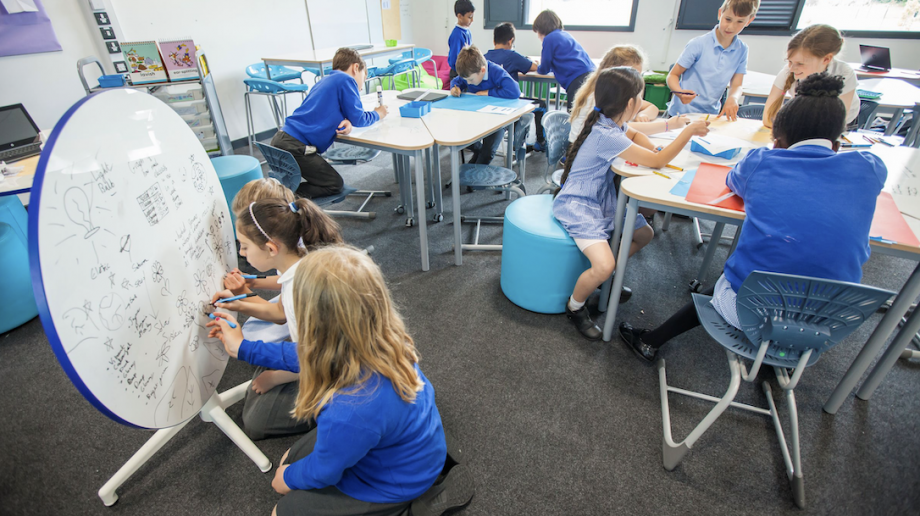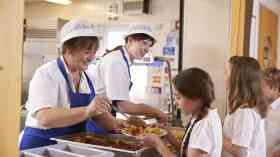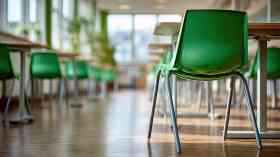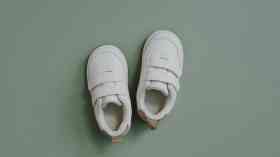
Rethinking space utilisation
Trumpington Park Primary School, part of Cambridge Primary Education Trust, has signed up to an international project that could fundamentally rethink space utilisation in the classroom
Planning Learning Spaces was published in October 2019 as a guide for anyone involved in the planning and design of learning environments. The book brought together educationalists and innovative school architects from all over the world to pool their collective expertise and inspire the design of more intelligent learning spaces.
To support this, Planning Learning Spaces in Practice was launched to help schools translate their educational vision into learning space design principles, enabling them to create new, or refurbish existing, spaces that actively support their learning goals. Schools are guided through a reflective process, building the link between curriculum and design via a structured framework. Focusing on the school’s vision, values and ethos, the process helps translate learning behaviours and activities into design principles.
A new approach to design
Trumpington Park Primary School was invited to participate in the global pilot of this Planning Learning Spaces in Practice project. Offering a new approach to learning space design, the Planning Learning Spaces team is working with the Cambridge school to help colleagues align their physical learning environments with their educational vision, in a way that supports the children’s personalised and independent learning.
The school was heralded as state-of-the art when it opened its doors in September 2017. Entering the central hall of the school, which opens onto the galleried double-height ICT and library resource centre, it is easy to see why. However, the staff were still presented with the inevitable standardised classrooms (measuring approximately 55m2 for up to 30 children) in which to work, and school leaders were looking for innovative and cost-effective ways to transform these standard-issue rooms into inspirational learning environments.
One advantage to a new school like Trumpington Park Primary is that not all classrooms are in use for the first few years, so by joining the Planning Learning Spaces in Practice pilot project the school has the opportunity to develop its learning spaces in alignment with its educational vision.
Meetings and workshops were held with the Planning Learning Spaces team to define the school’s vision, values, ethos and current practice. The school has then used the Planning Learning Spaces Design Framework to develop what it wants to do next, looking at every aspect of school life, and how this relates to the design of learning spaces.
“We started from the heart of our ethos and our values, and looked at those in terms of what we wanted to achieve in our teaching and learning, but then assessed the constraints of the current classrooms we have in being able to get that vision to work,” said Mel Shute, headteacher at Trumpington Park Primary School. “Whilst we want to emphasise collaboration and ownership of learning, this can sometimes feel restricted by the furniture and fixed features of a space and make it harder for children to be able to do some of the things we feel are fundamental in their learning. From there, we have looked at different models to enable children to be able to work in different ways in that space.”
The effect of social distancing
With social distancing in place, Mel revealed that “children have been more separated than we would want, bearing in mind that one of our key values is collaboration, and one of the key drivers of the space”, but she is focused on the expected longer-term impact: “What we anticipate, and what we have seen from small groups of children using the space at this time, is being able to have a high level of flexibility around the organisation of a space will have a huge impact on the way in which teaching and learning happens there. Now we are looking at all the different learning that can happen in that space in very different ways, and teaching children how they can have an impact on their independence and ownership within that space. Having the children as a very central part of the classroom environment will, I believe, make a significant difference to their overall development.”
She added: “You look at a classroom and you take it as it is, particularly in a new build. This project has really forced our hand to look at that space in a very different way, go in with a different pair of glasses, and this has been refreshing.”
The impact of learning spaces
Terry White, project director and co-author of Planning Learning Spaces, explained the philosophy behind the overall project. “We know the impact learning environments have on educational outcomes, yet the majority of school classrooms are over 40 years old and even new builds fail to learn the lessons of research like The Clever Classrooms report,” he said. “The project involves spending time engaging with the teachers to help the school effectively recreate their learning spaces so that they align with their vision for learning and teaching. We have developed a structured framework that enables the school to reimagine their future environments for learning.”
The Planning Learning Spaces Design Framework builds consensus throughout the teaching staff and the wider school community to support sustained change, empowering schools to be creators of a new, ongoing relationship between pedagogy and space. UK Lead Project Facilitator Bhavini Pandya works with key staff and students throughout the process to ensure all views are accounted for, and that the newly-designed spaces can be used as effectively as possible for all learning opportunities. As a former teacher herself, Bhavini understands the clear link between pedagogy and space and how this can lead to better learning outcomes.
Professor Peter Barrett, author of the Clever Classrooms report, is monitoring the project to see how the learning outcomes of pupils are affected by this ‘hands on’ approach to creating their own learning environments. “The Planning Learning Spaces approach represents common sense about the positive articulation of spaces and pedagogy,” he said. “Delivering a methodology that makes this connection explicit, and ultimately driven by educational imperatives, is a really important potential contribution and I look forward to being involved in the rigorous assessment of outputs from this project.”
The Planning Learning Spaces in Practice process is suitable for schools looking to repurpose old spaces, or for those designing new buildings, and helps to ensure a successful transition into these purpose-designed learning spaces.
Latest News
31/10/2025 - 10:12
A growing number of UK children are now eligible for Free School Meals (FSM), yet most still aren’t taking advantage of them on a daily basis, new research reveals.
30/10/2025 - 01:28
In the wake of the Raac crisis, the DfE spent £5 million on research into the condition of school buildings, which is due to conclude in spring 2026.
30/10/2025 - 01:09
Malmesbury Primary School in Wiltshire has submitted plans for a major expansion, funded by entrepreneur James Dyson.
30/10/2025 - 00:55
Monday's Every Pair Tells a Story campaign to protest to highlight the national crisis in SEND provision.
29/10/2025 - 09:19
Estimated data from the Department for Education reveals that 470,000 pupils under 16s use local authority funded transport to get to school.







